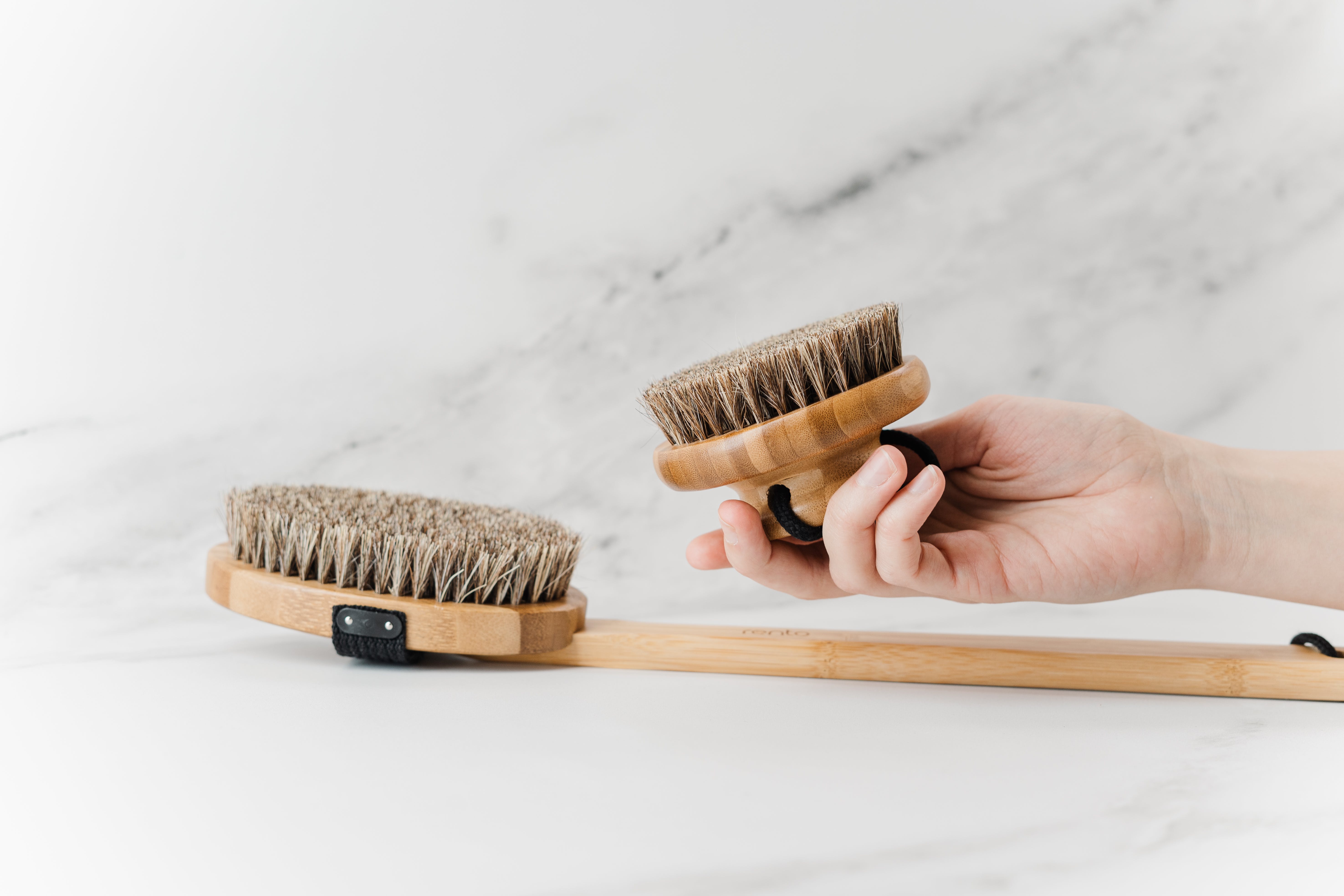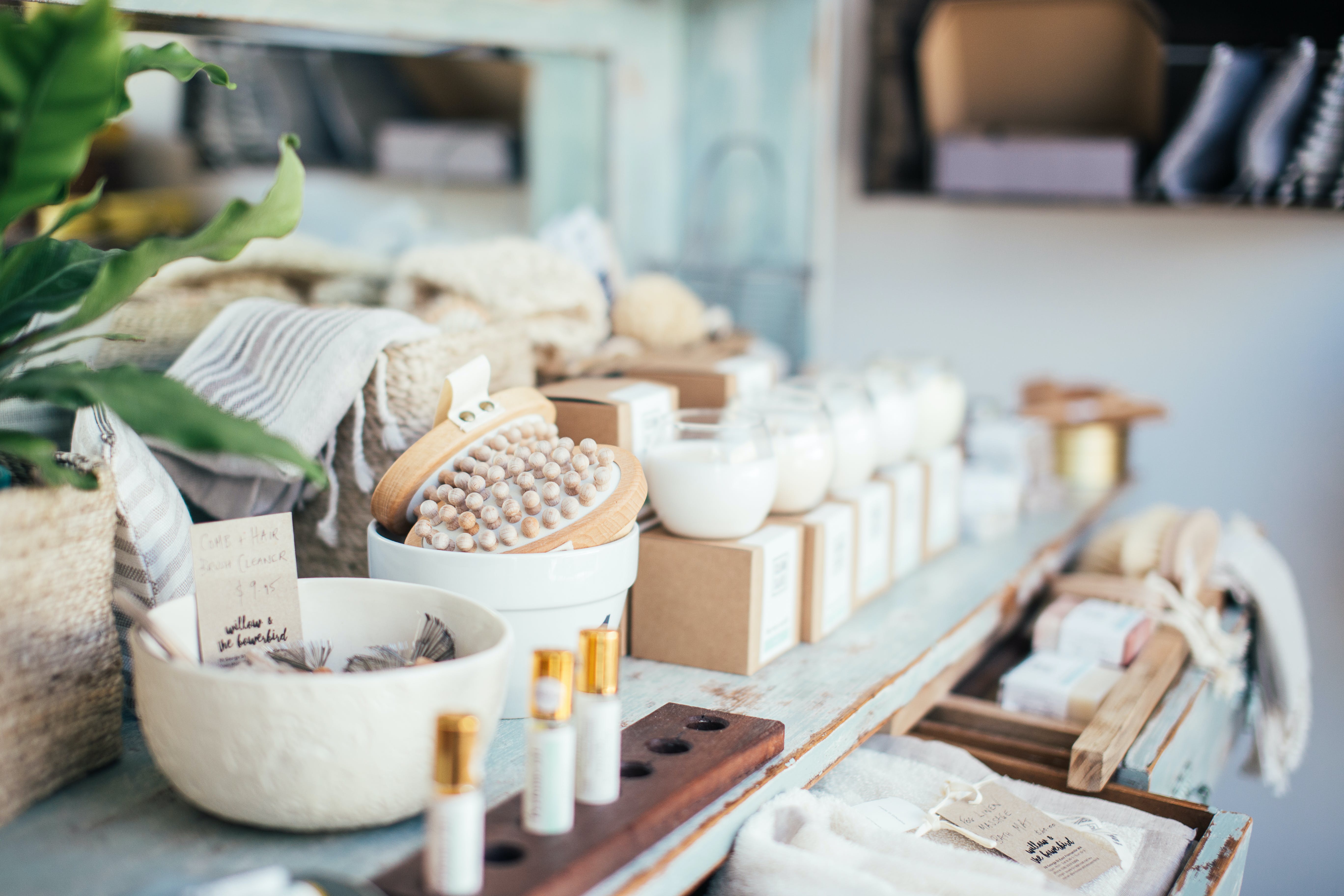- HOME
- Infrared Sauna Benefits
- Dry Brushing
Dry Brushing: Before Or After Infrared Sauna?
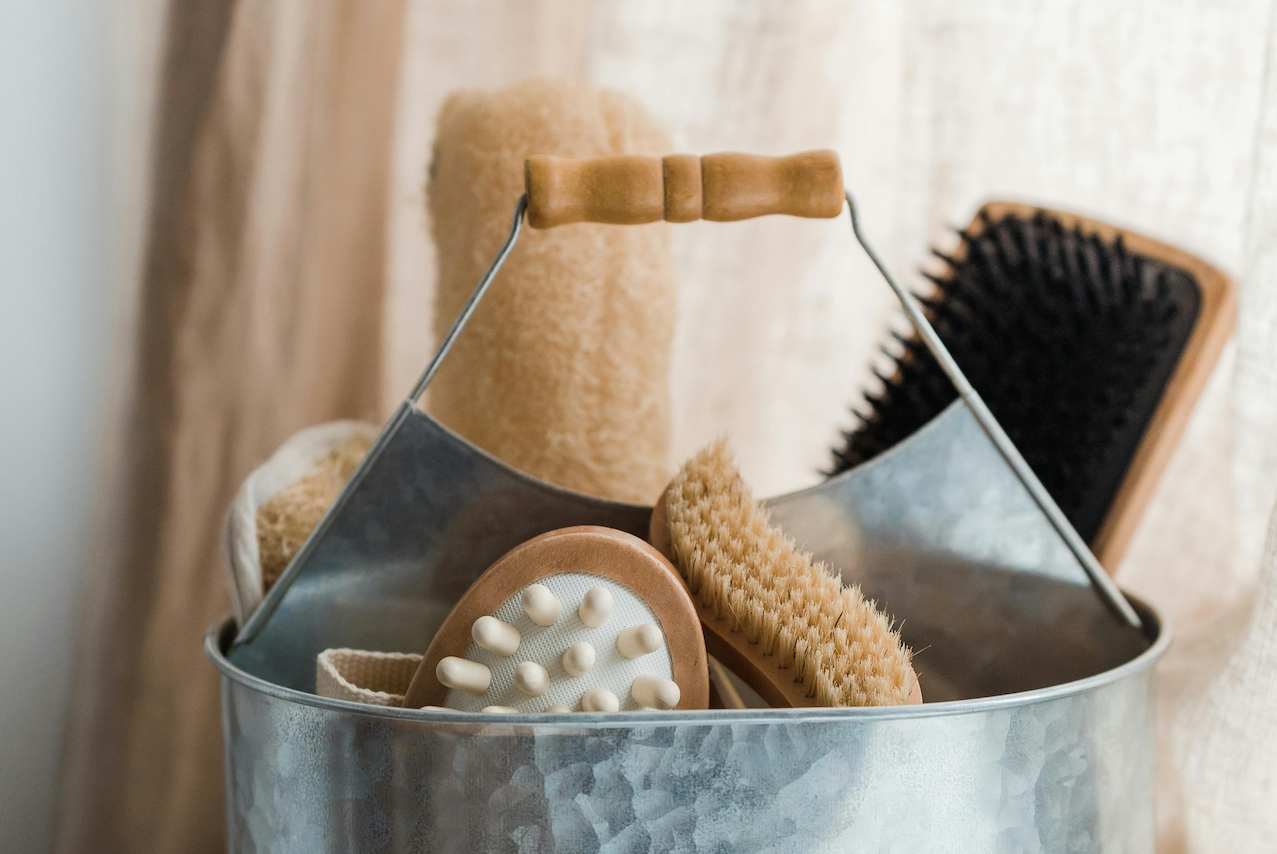
Dry brushing is advised as an additional therapy when using an infrared sauna, sauna blanket, or PEMF mat. Optimal result depends on whether you brush before or after the sauna, the right dry brushing technique and the right material. So let's discover the science behind dry brushing: what is it good for? And what makes combining it with an infrared sauna session so powerful?
A quick tour of the blog post
- What is drybrushing
- Benefits of drybrushing
- Drybrushing and infrared sauna session
- Beyond the sauna: add PEMF to your routine
- Recommended brush types
- The art of drybrushing
- Power Pairing: HigherDOSE + Young Goose Skincare
- Myth debunking
- The real effects of dry brush on health
- When to avoid
- Some considerations
What is dry brushing
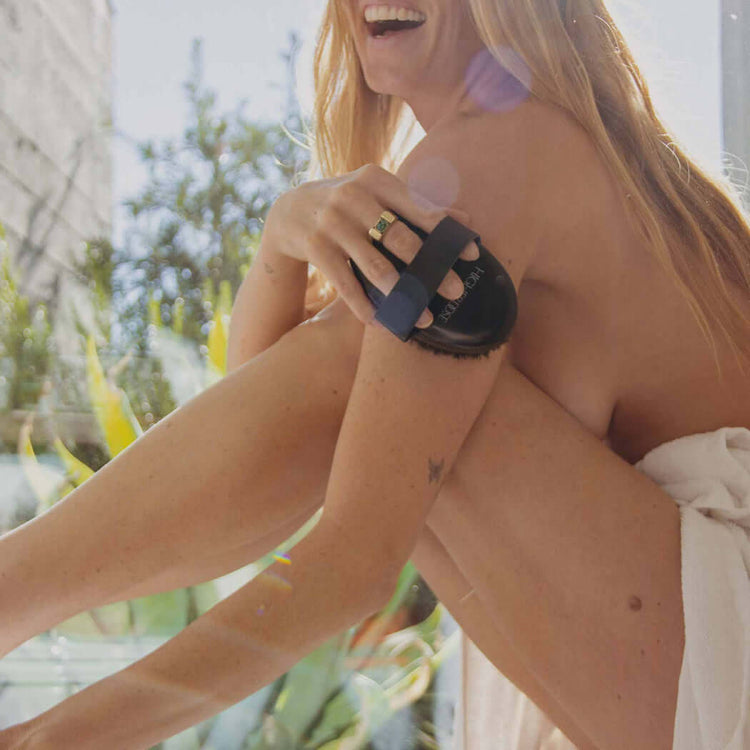
Dry brushing is a skincare technique that uses a natural bristle brush to gently massage the body in upward strokes. The method dates back to civilizations such as ancient Egypt, Greece and Ayurvedic practices. In those days it was often performed using materials readily available in nature, such as plant fibers, animal hair or even cactus spines.
This ancient technique has been cherished for centuries for its ability to promote lymphatic drainage, exfoliate dead skin cells and boost circulation. Today, amid a resurgence in holistic wellness, dry brushing fascinates enthusiasts looking for a smooth and rejuvenated skin.
Benefits of Dry Brushing
Dry brushing leads to a range of interconnected physiological improvements that go beyond the superficial:
SUPPORTS LYMPHATIC DRAINAGE
Serving as a catalyst for lymphatic drainage, dry brushing stimulates the lymphatic system, facilitating the removal of toxins and increasing detoxification, which in turn bolsters the immune system.
Better Skin Health
Through the removal of dead skin cells and debris from the surface and pores, dry brushing clears and smoothes skin, giving it a radiant complexion and heightened resilience.
Stimulated Blood Circulation
By amping up blood flow, dry brushing delivers vital oxygen and nutrients to skin cells while eliminating waste products, fostering optimal skin health and vitality.
Supports Digestive Health
The activation of the lymphatic system via dry brushing aids in the removal of toxins from the body, which indirectly benefits digestive health and optimizes metabolism.
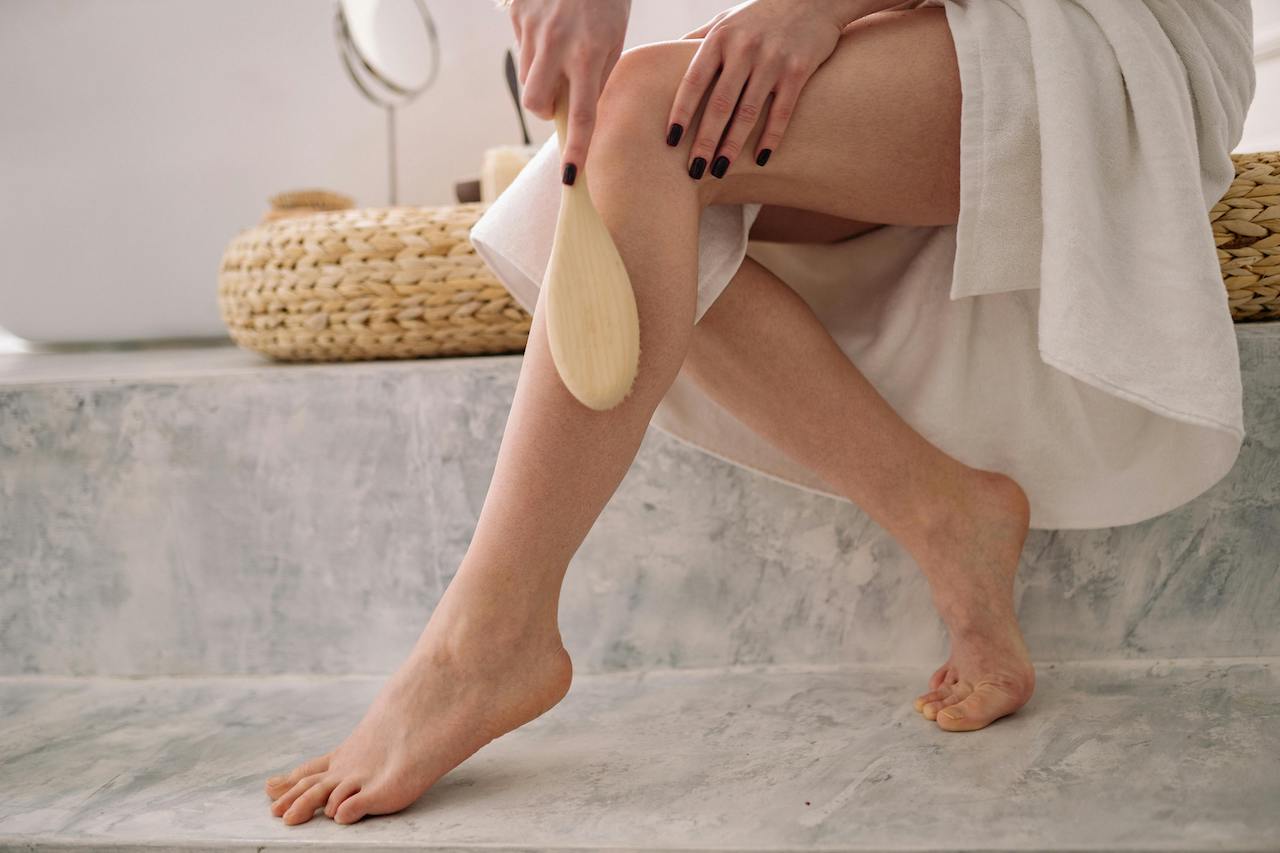
Dry brushing and infrared Sauna Session
Before sauna
Dry brushing before a sauna session helps exfoliation and unclogs pores, making it easier for the skin to sweat out toxins more effectively and prepares it for optimal heat absorption, maximizing detoxification benefits and preventing your pores from getting blocked again.
Perspiration due to the heat of the infrared sauna strengthens lymphatic drainage, expulsing impurities.
While dry brushing before a sauna enhances detox, and a pre-sauna shower prevents pores congestion. A short, warm shower rinses away loose skin cells and dilates the pores for efficient removal of toxins during the sauna session.
After Sauna
What about dry brushing after your sauna session? The benefits of dry brushing do not change: it still cleans the pores and invigorates lymphatic vessel function during the body's cooling phase. A shower before you start dry brushing is advised to wash away sweat and other impurities.
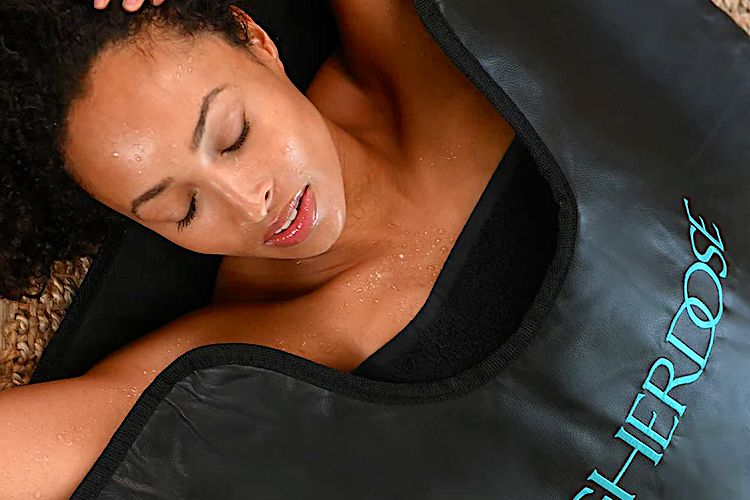
Dry Brushing + Sauna Blanket = Maximum Detox. Try it Before or After!
During sauna
The benefits of dry brushing before and after sauna are clear. This leads to the question: Can you dry brush during a sauna session? Yes, some choose to incorporate dry brushing into their sauna session by gently brushing their skin while in the sauna.
This practice may further encourage perspiration and detoxification by revving up blood circulation and lymphatic drainage. When brushing during a sauna session, it's essential to use caution to avoid overheating or overstimulating the skin.
Dry brushing before a sauna is particularly effective in preparing the skin for detox. Dry brushing during a sauna session cleanses and optimizes circulation and lymphatic vessel function. Dry brushing after especially helps deepen relaxation and supports actual lymphatic drainage during the body's cooling phase.

Pair your PEMF Mat session with dry brushing for a powerful duo—boost circulation, detox deeper, and feel renewed from the skin inwards. It’s not just rest—it’s radiant, cellular reset
Beyond the Sauna: Add PEMF to Your Routine
If you’re already using an infrared sauna or sauna blanket, PEMF (Pulsed Electromagnetic Field) therapy might be the missing link in your recovery stack. Like dry brushing, PEMF helps boost circulation and lymph flow—but it works from the inside out, using low-frequency electromagnetic pulses to support your cells and nervous system.
Think of it this way: dry brushing preps your skin, infrared opens your pores and heats your core, and PEMF calms the system and recharges you at the cellular level. Some mats even include infrared heat—so pairing dry brushing with sauna, then lying on a PEMF mat post-session, could be a game-changer for deep relaxation, detox, and sleep.
Curious? We’re diving deeper into PEMF and how it fits with sauna wellness here.
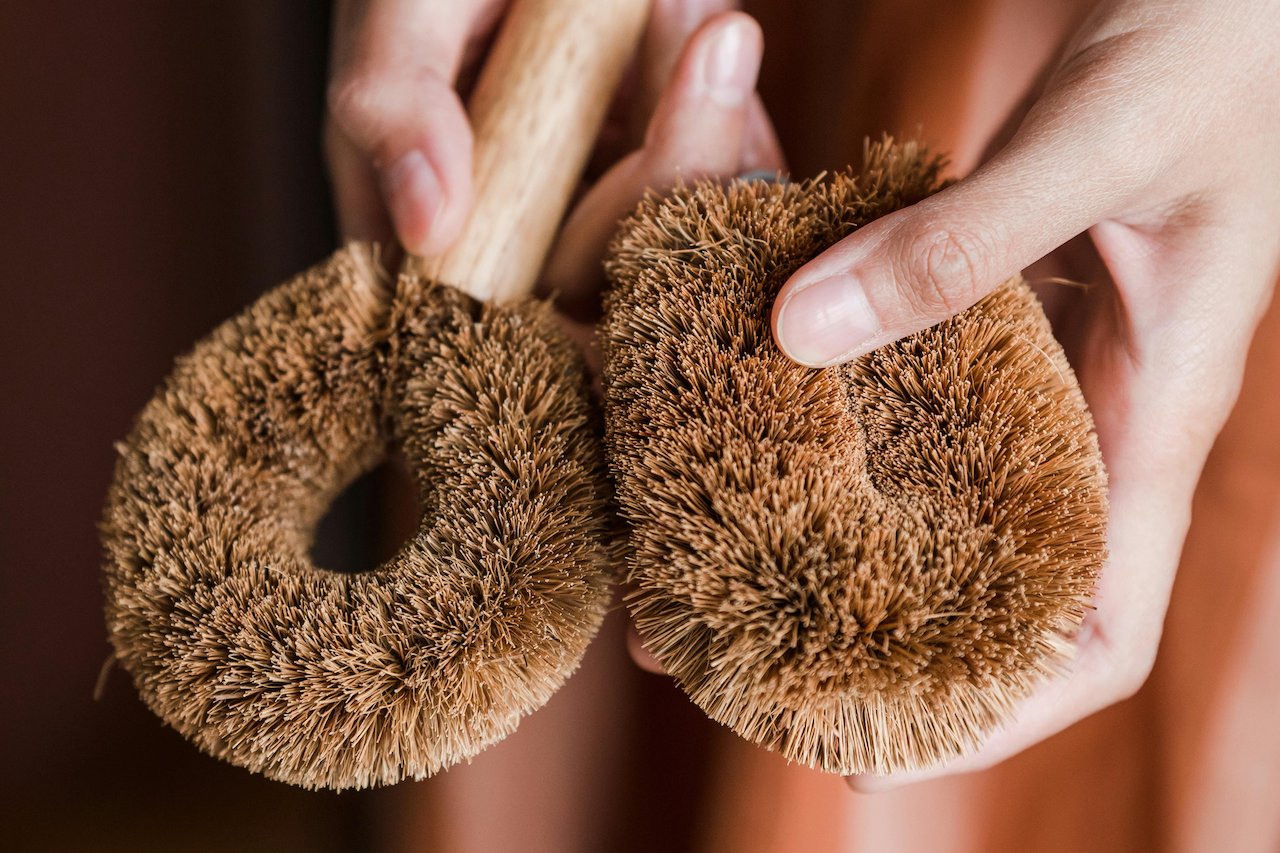
RECOMMENDED BRUSH TYPES
Use brushes made with natural, stiff bristles for optimal exfoliation and stimulation without damaging the skin. The brush should have a firm handle to reach all areas of your body comfortably. Avoid synthetic bristles, as they can be too harsh on the skin and may not provide the same natural benefits.
With the introduction of a diverse range of brushes made from both plant and animal materials, it is essential to provide comprehensive information to suit different preferences and skin needs.
While we respect different viewpoints on animal rights, we strive to provide a thorough understanding of all available options to empower you to make informed choices for their skin care routines, and not inadvertently end up with tools you feel might be uncomfortable using.
When choosing a dry brush, consider the firmness suited to your skin's sensitivity and the brush's construction for long-lasting use.
Plant-Based Materials
The following plant-based materials are commonly used for brushes:
Sisal: Harvested from the Agave sisalana plant, sisal offers stiff bristles ideal for effective exfoliation.
Tampico: Sourced from the Agave lechuguilla plant, Tampico fibers provide a slightly softer brush suitable for sensitive skin or delicate areas.
Both sisal and Tampico are durable, sustainable, and biodegradable, making them environmentally friendly options for dry brushing enthusiasts seeking a balance between thorough exfoliation, eco-consciousness and vegan choices.
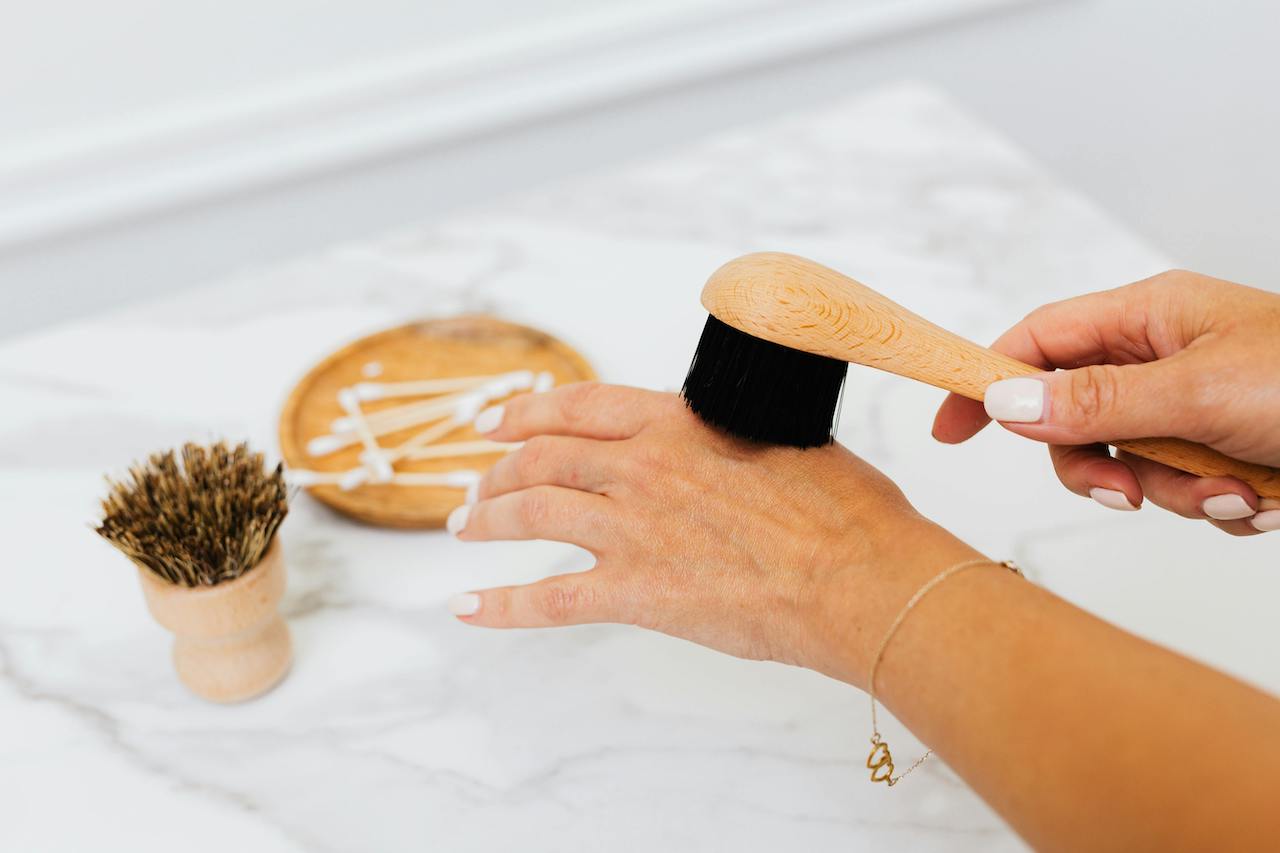
Animal-Based Materials
In addition to plants, there is also a choice of brushes made from animal hair. Each hair type has its own unique properties for exfoliating.
Horsehair brushes are known for their stiffness and durability, making them effective for exfoliating the skin and promoting circulation. The firm bristles provide a thorough scrub, making horsehair brushes ideal for individuals seeking a deeper exfoliation experience.
However, due to their firmer texture, horsehair brushes may not be suitable for those with very sensitive skin.
Boar hair brushes are renowned for their natural stiffness and exceptional exfoliating properties. Boar hair bristles effectively eliminate dead skin cells and promote circulation, resulting in smoother and revitalized skin.
Goat hair brushes offer a gentler option compared to boar and horsehair brushes. The softer bristles are suitable for those with sensitive skin or who prefer a more delicate exfoliation experience.
Badger hair brushes feel softer and more luxurious than horsehair, boar hair and even goat brushes. It is known for its use in shaving brushes. The fine bristles provide a gentle exfoliation experience, making them suitable for those with sensitive or delicate skin.
Badger hair is also known for its ability to retain moisture, allowing it to glide smoothly and comfortably over the skin during dry brushing.
In some cases, brushes may combine different types of animal hair to create a custom exfoliation experience tailored to individual preferences and skin types.
Copper Brushes
An innovative choice in the world of dry brushing, copper-infused bristles provide a multifaceted approach to skin health. Derived from the natural element copper, these bristles are ion-charged, creating a unique interaction with the skin during use:
- When brushed against the skin, copper bristles release ions that help to reduce body acidity and rebalance the body’s natural energy states. This can mitigate the impact of electromagnetic pollution from modern technology [1].
- Apart from traditional exfoliation, copper bristles accelerate lymphatic drainage and stimulate circulation, contributing to improved skin texture and detoxification.
These copper brushes come with either animal hair or vegan, plant-based bristles—just be sure to choose one with the right firmness for your skin and a solid build for lasting comfort and durability.
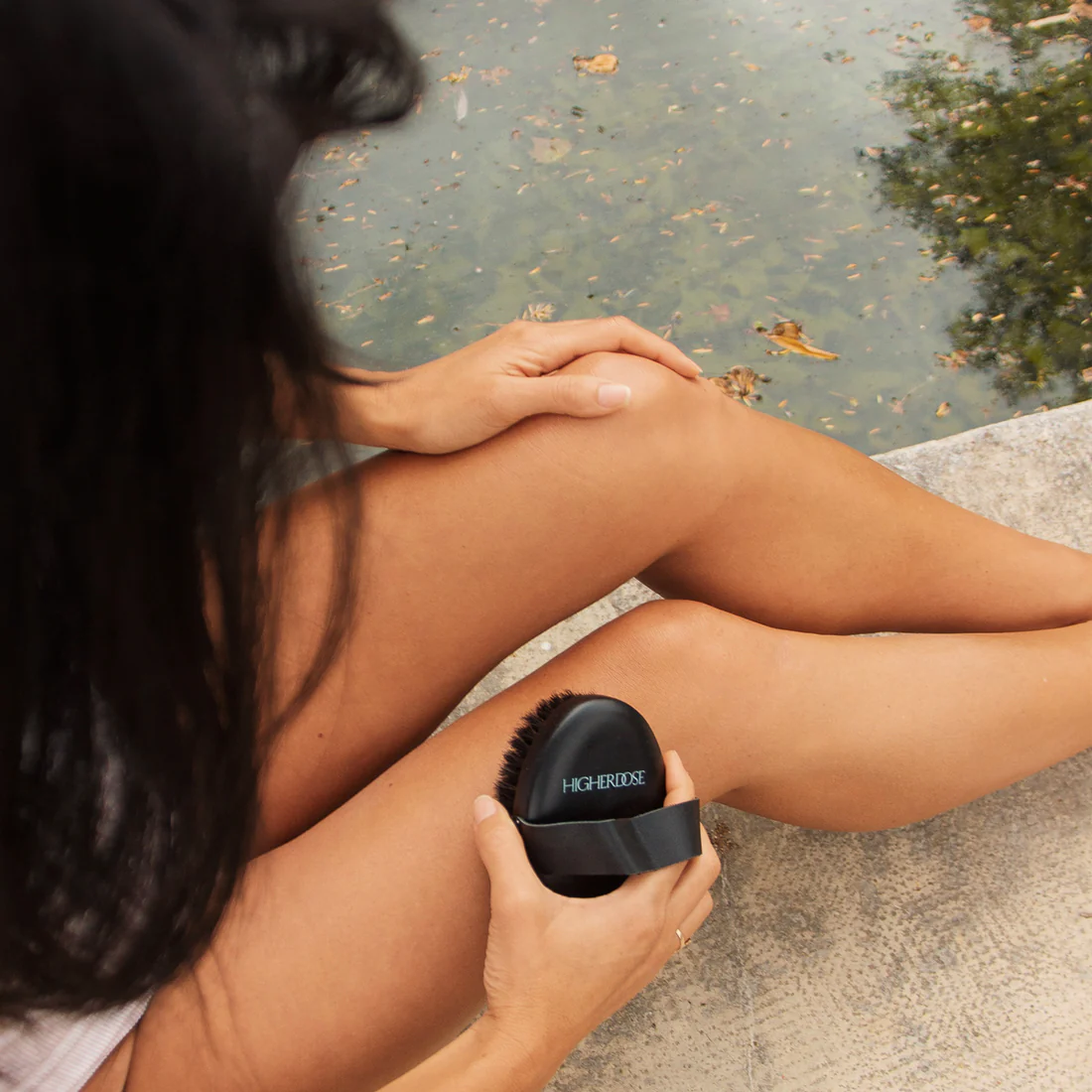
Supercharge Copper Body Brush (horse hair)
Take your dry brushing ritual to the next level with the Supercharge Copper Body Brush. Crafted with ion-charged copper bristles and soft, humane horsehair, this brush does more than exfoliate: it energizes your skin. The copper bristles create friction that releases negative ions, which may help balance your body’s energy, reduce acidity, and leave your skin feeling truly revived.
With a sturdy beechwood base and leather hand strap, it’s designed to feel as good in your hand as it does on your skin.
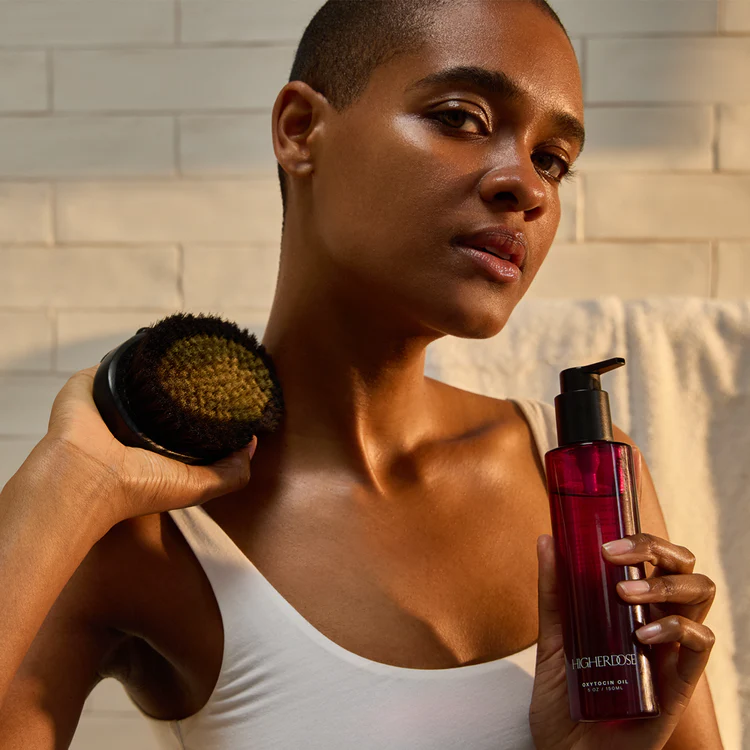
Daily Dose Ritual: Brush. Boost. Glow.
Pair your Copper Brush with Oxytocin Oil for the ultimate two-step ritual. Dry brushing stimulates lymph flow and exfoliates, while Oxytocin Oil deeply hydrates, boosts skin elasticity, and locks in your post-brush glow. Together, they supercharge circulation, tone the skin, and restore balance—making one plus one feel like three.
For best results, practice this ritual 3–5 times per week, or daily if your skin loves the attention. Plus, when bundled in the Daily Dose Set, you save $41 (Oxytocin oil normal price is $75)
HigherDOSE often runs all kinds of promos—head to their site for a HigherDOSE discount code and treat yourself for less!
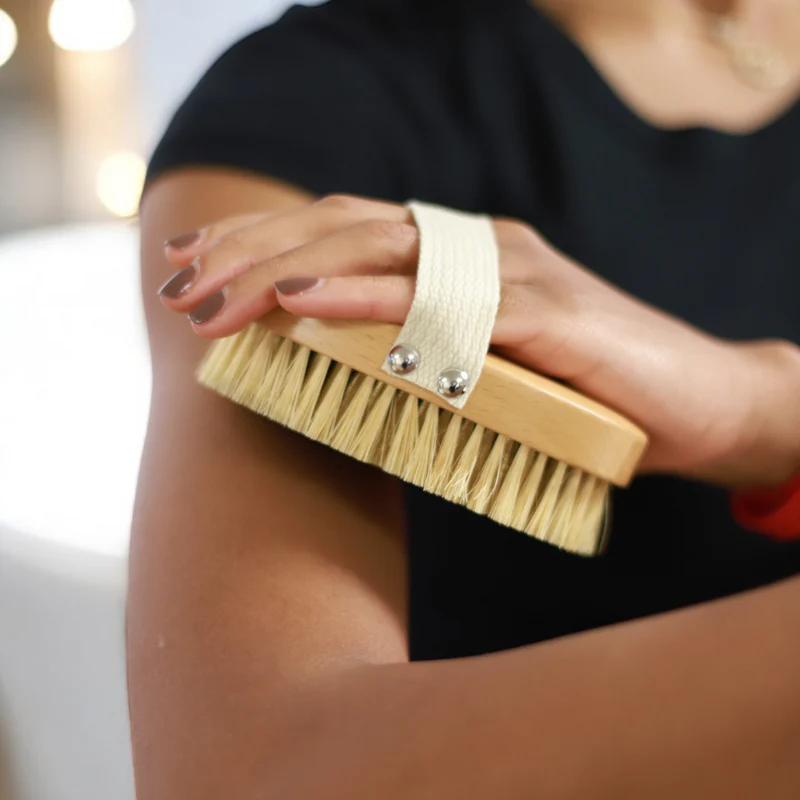
TheraBrush with Copper Bristles (vegan)
This isn’t your average dry brush. The vegan TheraBrush combines exfoliation with energy-balancing benefits thanks to its copper-infused, plant-based Japanese Sisal bristles. As you brush, the copper creates gentle friction that releases neutralizing ions. This helps to rebalance your body’s energy flow and combat digital overstimulation.
Also available with a long handle for hard-to-reach areas.
$48 at Thera Optimal Health
Get 10% OFF! Use code SAUNACETHERA1 when purchasing Therasage products through our link at Thera Optimal Health
And you know, there is something completely different than the well-known brush.
GUA SHA TOOLS
Gua Sha tools have ancient origins in traditional Chinese medicine, where they were crafted from materials like stones, horns, or bones. These tools reflect a deep connection to nature and traditional healing practices, with each material carrying its own unique properties and symbolism. [2]
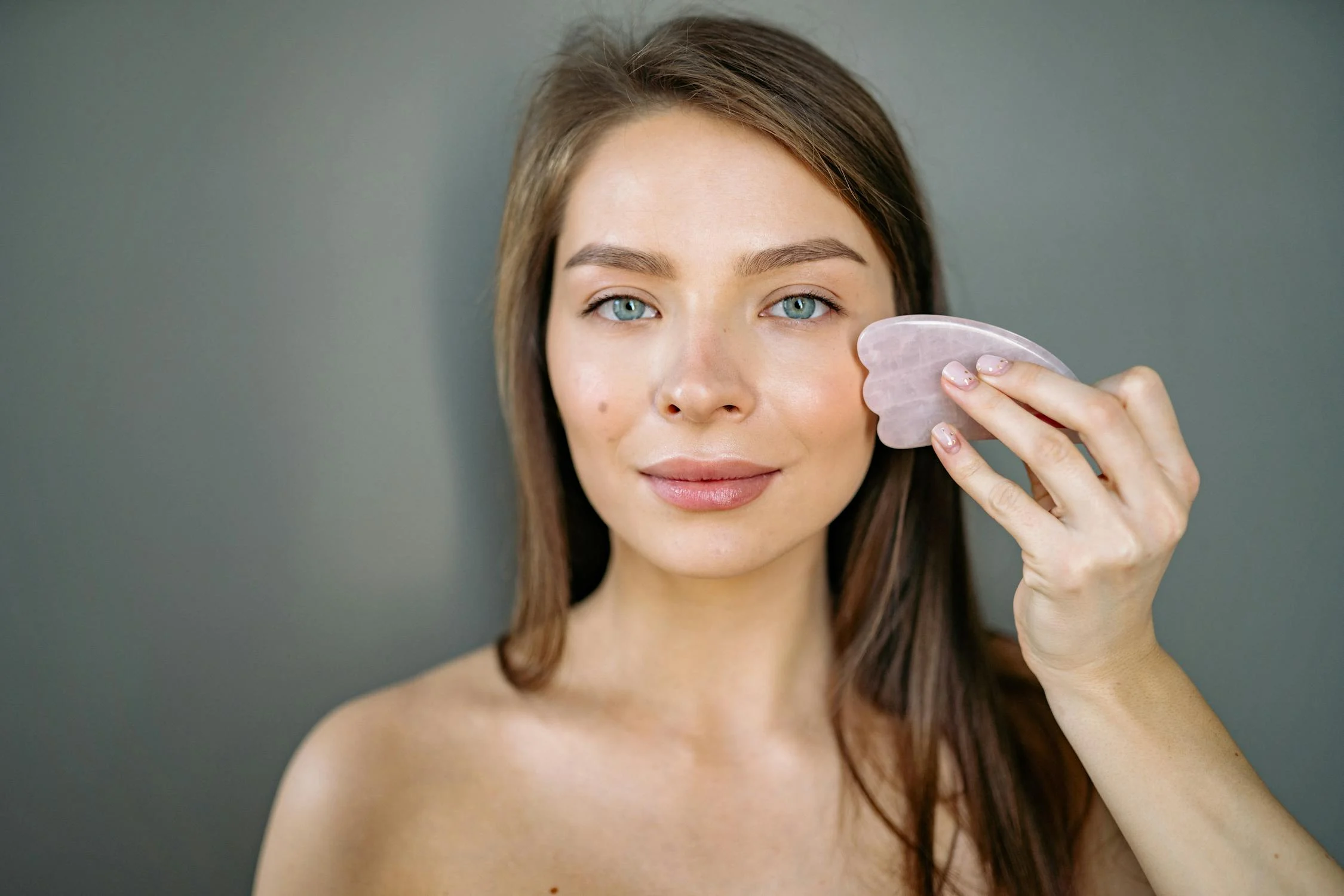
Jade and Rose Quartz: Popular choices due to their alleged healing properties and ability to promote relaxation and balance. Jade and rose quartz are popular materials today, valued for their healing properties and cultural significance.
Buffalo Horn: Esteemed for its durability and traditional significance in certain cultures. Buffalo horn has also been historically used for its durability and symbolism.
Regardless of the material used, Gua Sha tools are utilized to gently scrape the skin, stimulating circulation, alleviating tension, and encouraging lymphatic drainage.
The Art of Dry Brushing
Mastering the art of dry brushing involves understanding the proper techniques to ensure a beneficial and safe experience for your skin.
Proper Techniques
The key to effective dry brushing is in the direction and quality of the strokes. Always brush towards the heart to align with the natural flow of your lymphatic system. Begin at your feet and move upwards, using long, smooth strokes on your legs, arms, and torso.
When brushing your abdomen and chest, follow a circular motion that still directs the flow towards the heart.
Personalization
Not all skin is the same, and dry brushing can be customized to suit individual needs and sensitivities. The pressure applied and the stiffness of the brush can be adjusted based on personal comfort and skin tolerance.
Start with softer brushes and lighter pressure if you're new to dry brushing or have sensitive skin, gradually working your way up as your skin becomes accustomed to the sensation.
Frequency
Experts typically recommend dry brushing a few times per week to reap its benefits, although some individuals may incorporate it into their routine before every sauna session for an enhanced detoxification experience.
Internal and external hydration
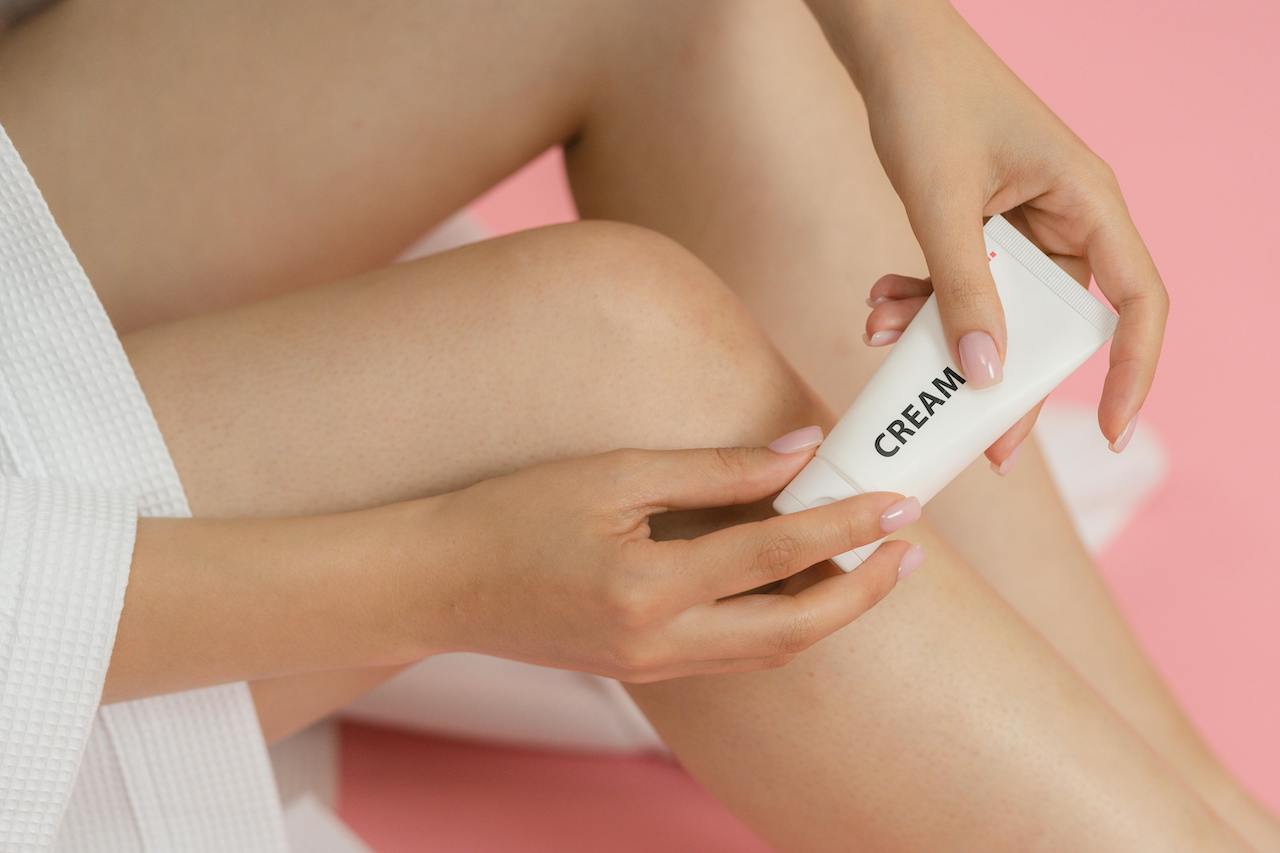
Hydration is key before, during and after a sauna session. When you add dry brushing to your ritual, it becomes even more important to drink enough water to flush out the toxins mobilized by brushing. And not just internally.
To restore hydration and protect your skin barrier after a sauna session, apply one of the following:
A hydrating, fragrance-free moisturizer enriched with soothing ingredients such as shea butter and hyaluronic acid, or choose a plant-based oil like coconut, olive, almond, or jojoba oil.
Post-Sauna Hydration for Healthy, Balanced Skin
After a sauna session, especially when paired with dry brushing, your skin craves deep hydration and barrier support. That’s where Young Goose products shine. Specially formulated to work synergistically with infrared heat, they reinforce skin regeneration, lock in moisture, and help restore balance after detox. These advanced formulations go beyond basic hydration!
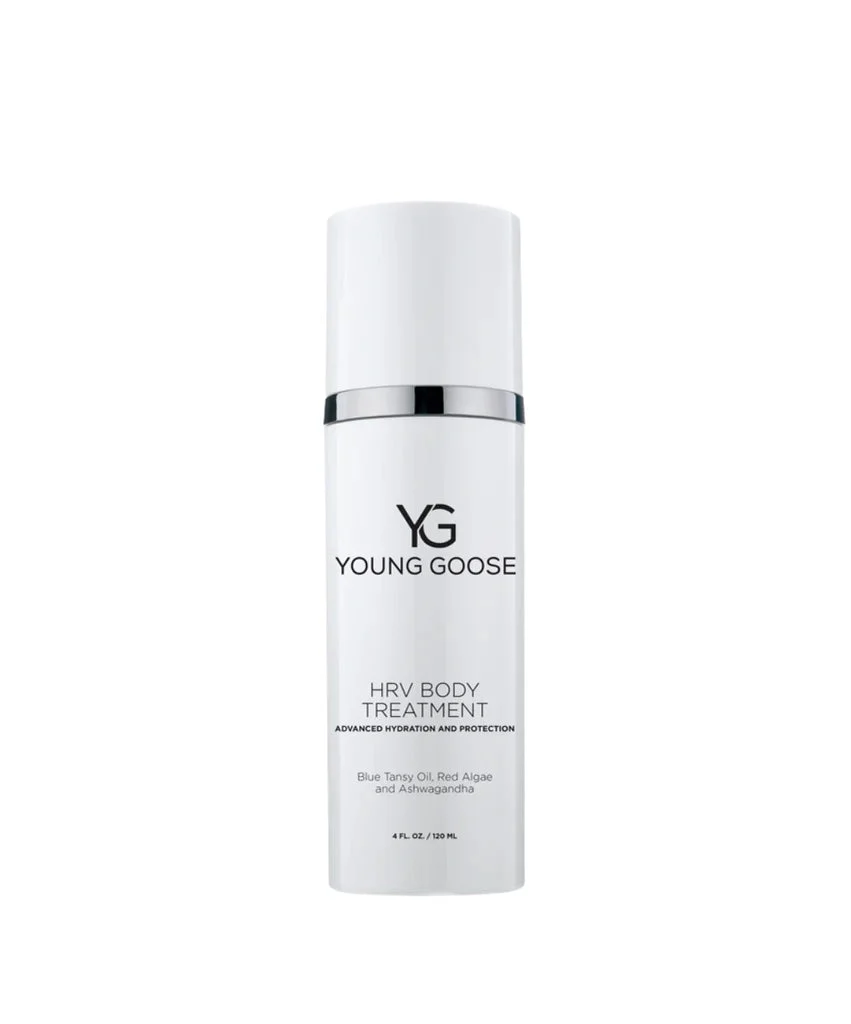
HRV Body Treatment
This hydrating body cream nourishes and firms your skin with ceramides, hyaluronic acid, and collagen while protecting against blue light and pollution. It helps calm redness, reduce age spots and wrinkles, and restore your skin’s natural vitality. Infused with soothing botanicals like Ashwagandha and Blue Tansy, it also adds a gentle aromatherapeutic touch to your routine.
Combined with dry brushing, which boosts circulation and skin renewal, this cream enhances your skin’s resilience and glow. Suitable for all skin types.
$125 at Thera Optimal Health
Get 10% OFF! Use code SAUNACETHERA1 when purchasing Young Goose through our link at Thera Optimal Health
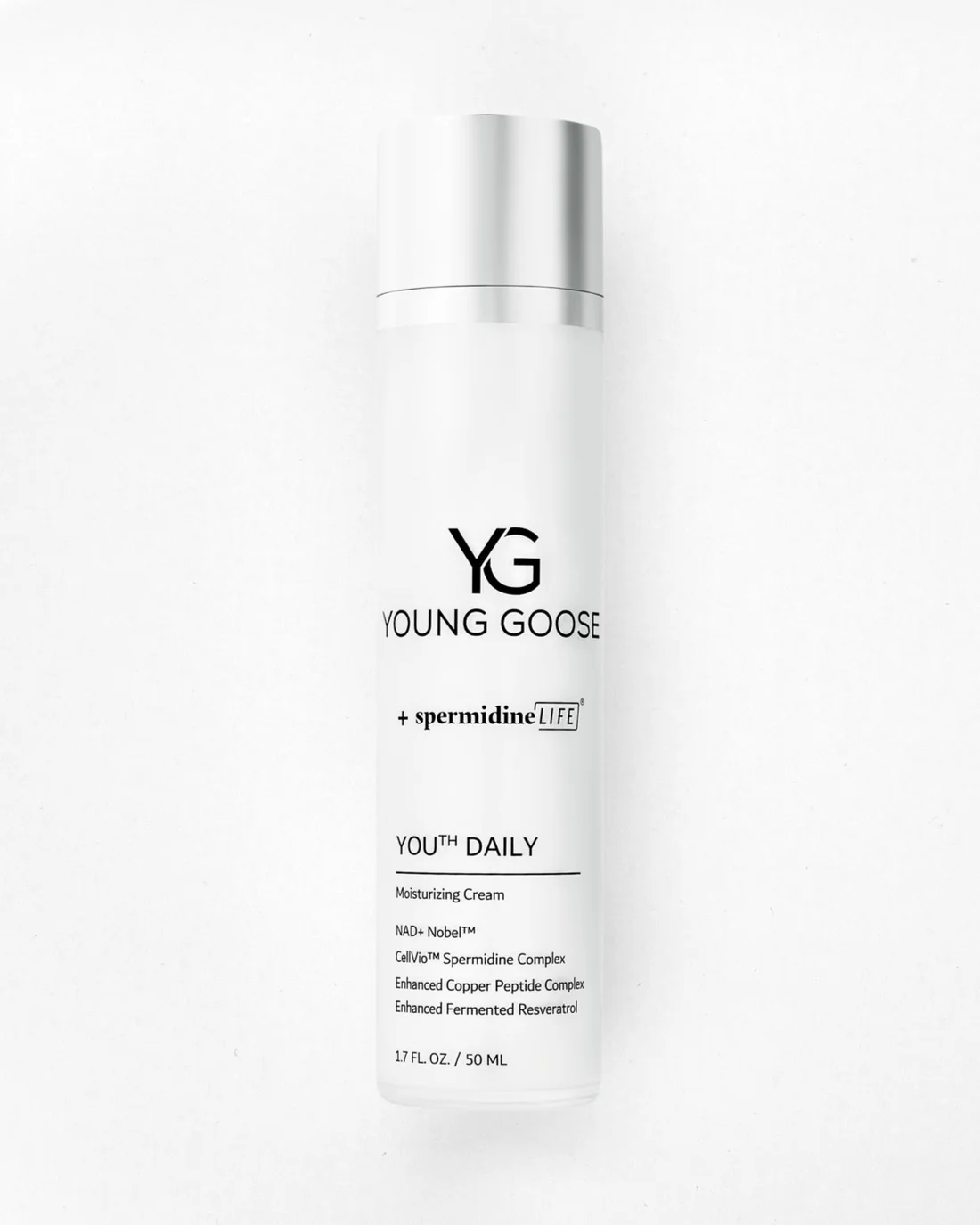
YOUth Daily Moisturizing Cream
Formulated with micro-encapsulated NAD+ precursors, Spermidine, an Enhanced Copper Peptide Complex, and Fermented Resveratrol, this cream addresses all 12 key signs of skin aging. It supports cellular health, speeds up skin repair, and boosts your skin’s natural defenses. This helps to reveal a radiant, youthful glow.
More than just a moisturizer, YOUth Daily works as part of your daily ritual to restore your skin’s natural resilience and brightness, perfectly complementing the benefits of dry brushing.
$176.50 at Thera Optimal Health
Get 10% OFF! Use code SAUNACETHERA1 when purchasing Young Goose through our link at Thera Optimal Health
Power Pairing: HigherDOSE + Young Goose Skincare
We love pairing HigherDOSE’s detox-enhancing tools with Young Goose’s skin-repairing formulas. HigherDOSE supports deep cleansing with tech-backed wellness products like their Infrared Sauna Blanket, while Young Goose’s skincare works post-sauna to hydrate, calm, and strengthen. Together, they transform dry brushing and sweating into a glow-boosting ritual that works from the inside out.
Myth Debunking
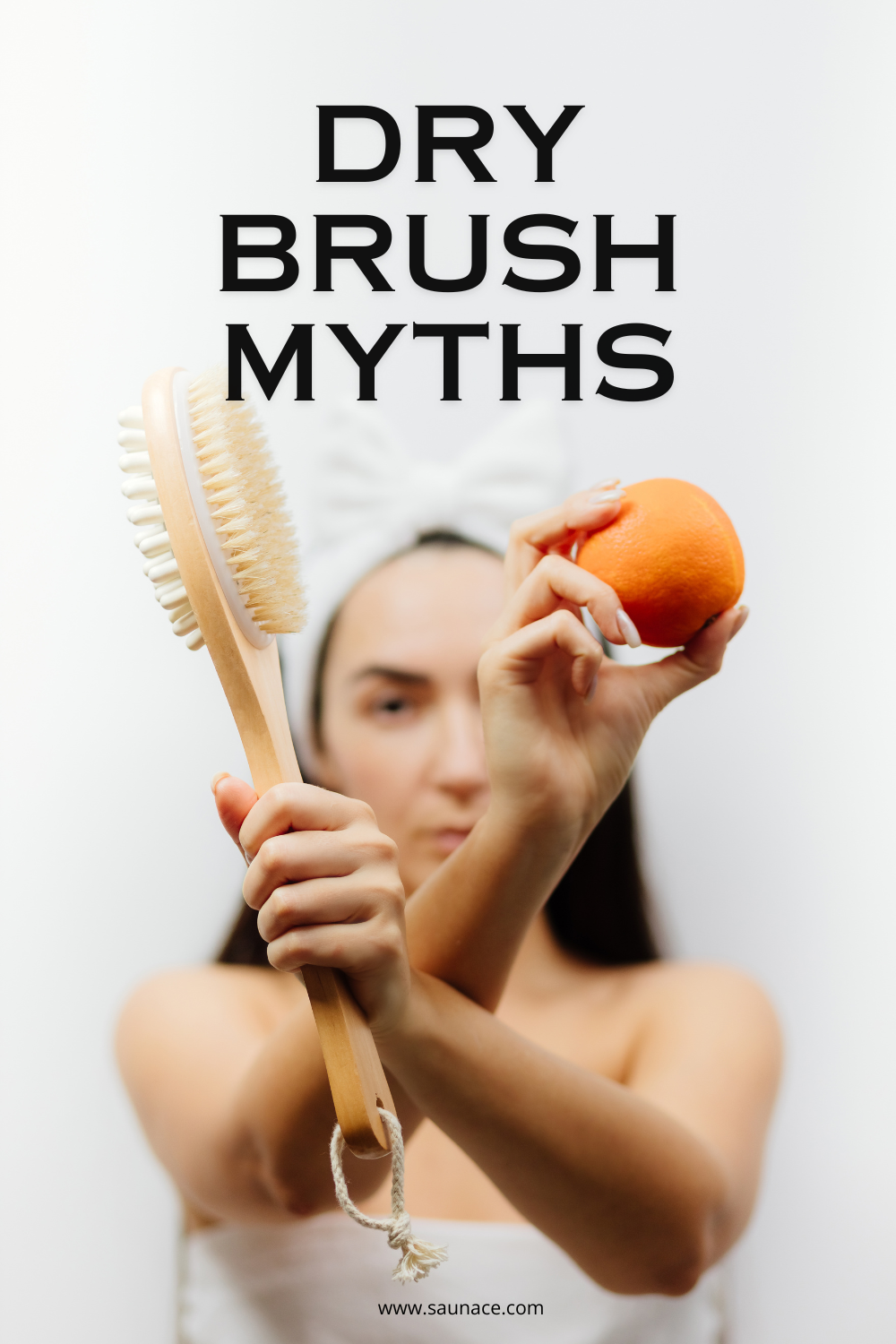
There are some common misconceptions surrounding dry brushing:
EFFECTIVENESS IN REDUCING CELLULITE
One prevalent myth suggests that dry brushing can effectively reduce cellulite. While dry brushing may boost skin texture and promote lymphatic drainage, scientific evidence supporting its efficacy in reducing cellulite is limited.
Cellulite is not a superficial problem but arises from an underlying structural condition. You can read about this and how regular infrared sauna sessions do help reduce cellulite in our blog post on this specific subject.
MISCONCEPTIONS ABOUT SUITABILITY
Here's a misconception that dry brushing is only suitable for certain individuals or skin types. However, dry brushing can be beneficial for most people, regardless of age or skin condition, when performed correctly. We will discuss this in more detail later in this article.
METAL BRUSHES
Another myth revolves around the use of metal brushes, such as iron brushes, for dry brushing. Contrary to popular belief, metal brushes can be harsh on the skin and may cause damage.
We'll emphasize the importance of using natural bristle brushes to ensure a gentle yet effective brushing experience, backed by expert advice.
The Real Effects of Dry Brushing on Health
We now know from cultural anecdotes and individual experiences that dry brushing is cherished for its potential to improve skin health, blood circulation and lymphatic drainage. This then has a positive effect on your immune system and digestion.
However, modern science has only just begun to uncover the mechanisms behind these age-old techniques. A 2019 study [3] points to the benefits of supporting lymphatic function in particular.
Given these preliminary findings and enduring cultural testimonies, there is a compelling argument for further scientific research to fully understand the health effects of dry brushing.
When to avoid?
Here are some situations where dry brushing may not be suitable:
Skin Conditions
People with certain skin conditions, such as eczema, psoriasis, or severe acne, should approach dry brushing with caution. Aggressive brushing may aggravate these conditions, leading to inflammation, redness, or flare-ups.
Consultation with a dermatologist is advisable to determine if dry brushing is suitable and to receive personalized recommendations tailored to individual skin needs.
Skin Sensitivity
Individuals with highly sensitive skin may experience discomfort or irritation with dry brushing, particularly if using brushes with stiff bristles or applying excessive pressure. It's essential to adjust the brushing technique and pressure to suit individual skin sensitivity levels.
Starting with softer brushes and gradually increasing pressure can help minimize discomfort and prevent skin damage.
Sunburn or Inflammation
Dry brushing over sunburned or inflamed skin can be painful and can further damage the skin barrier. It is best to avoid dry brushing in these situations until the skin has completely healed.
Open Wounds or Cuts
If you have open wounds, cuts or scrapes, you should avoid these areas. Brushing over damaged skin can worsen irritation, delay healing, and increase the risk of infection.
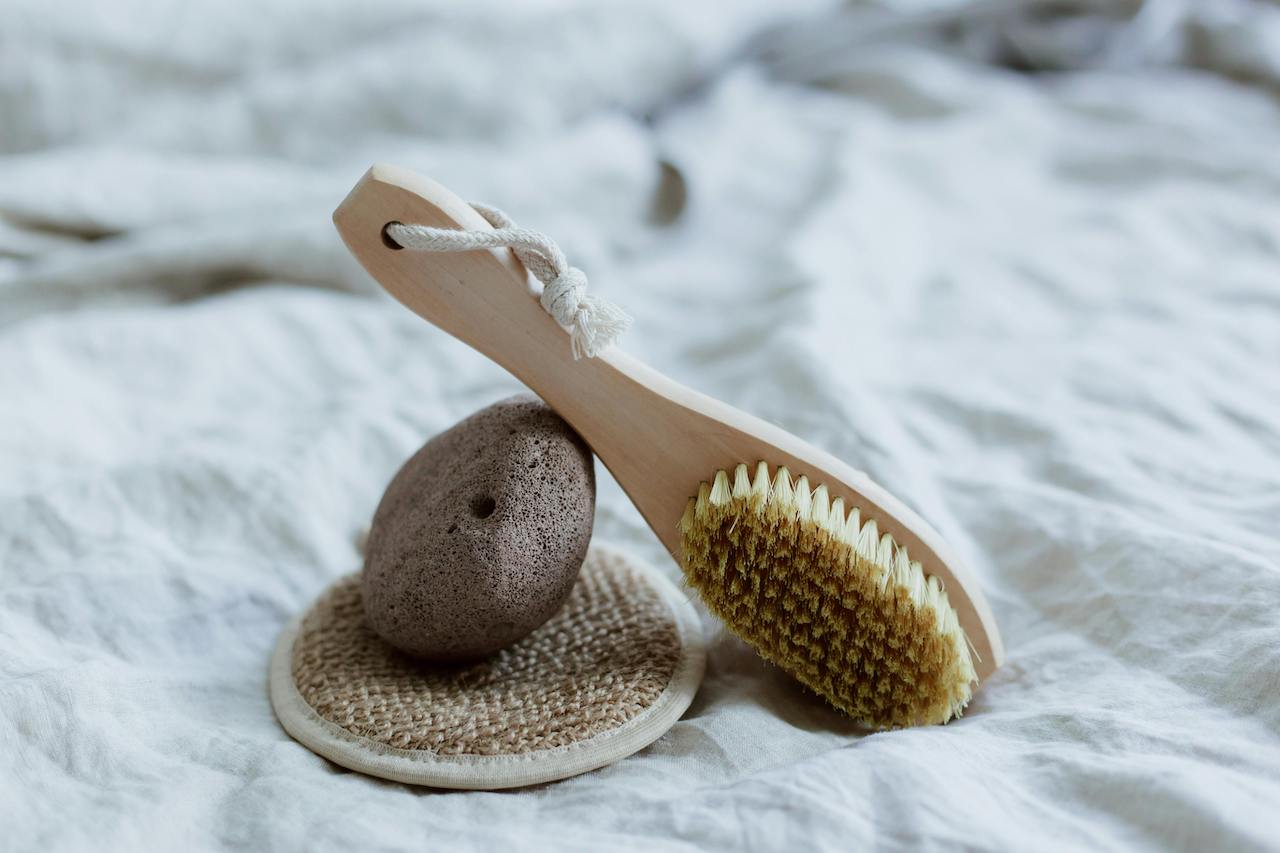
Some considerations
Although dry brushing can be a stimulating addition to your skin care regimen, it is important to approach this practice with care. The skin serves as a shield and protects against external elements, and over-exfoliation can reduce this protective barrier.
If you notice redness or a feeling of a higher sensitivity, this is a clear signal from your skin to pause and reassess your method. Dry brushing should be a gentle, non-aggressive ritual.
And if you have any concerns or specific medical conditions, consulting with your doctor is always the best course of action.
The art of dry brushing is personal. Will you brush before, during, or after your next session, whether it's a sauna (blanket) or a PEMF mat? The choice, like the brush, is in your hands.
Saunace is supported by its audience. When you purchase through links on our website, we may earn an affiliate commission. Learn more about our affiliate policies here.

Diane Sargent
Eager for more insights on skin care? Follow these links to learn more, or visit saunace.com for even more tips and expert reviews (PEMF mats and sauna blankets) .
References
1. Jiang SY, Ma A and Ramachandran S. Negative Air Ions and Their Effects on Human Health and Air Quality Improvement. PubMed, https://www.ncbi.nlm.nih.gov/pmc/articles/PMC6213340/
2. Arya Nielsen et al., The effect of Gua Sha Treatment on the Microcirculation of Surface Tissue: a Pilot Study in Healthy Subjects, PubMed, https://pubmed.ncbi.nlm.nih.gov/17905355/
3. Noa Schwartz et al., Lymphatic Function in Autoimmune Diseases, PubMed, https://pubmed.ncbi.nlm.nih.gov/30949174/
